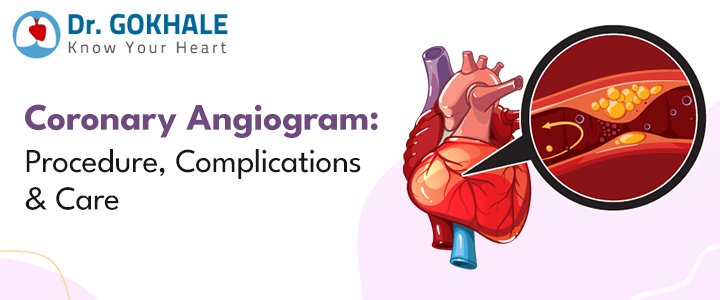A coronary angiogram is a medical procedure that helps visualize coronary arteries, blood vessels that supply blood to the heart. As a diagnostic test, a coronary angiogram uses contrast dye and X-ray imaging to visualize the coronary arteries, providing valuable information about potential blockages and abnormalities in these arteries.
But why does one need a coronary angiogram? What is the procedure, and does it have any side effects? Let us delve into the details with the inputs from a leading heart transplant surgeon in Hyderabad, Dr. Alla Gopala Krishna Gokhale.
Unmasking Heart Arteries: The Importance of Coronary Angiograms
A coronary angiogram sheds light on potential blockages by allowing heart specialists to observe blood flow in the coronary arteries. Dr. Alla Gopal Krishna Gokhale, a heart specialist in Hyderabad, emphasizes that a coronary angiogram evaluates blood flow to assess potential blockage problems and detect heart issues, including severe events like heart attacks.
This diagnostic tool helps determine future medication sources, possible lifestyle changes, and whether medical intervention is necessary to reduce the risk of future heart problems. Heart specialist in Hyderabad, Dr. Gokhale, highlights that, as a diagnostic tool, coronary angiograms also play a vital role in crafting preventive measures and providing personalized care for patients.
“It helps us diagnose a wide range of heart problems, including aneurysms, cases of possible heart failure, heart arrhythmias, or congenital disabilities, such as a hole in the heart,” he says.
Coronary Angiogram Procedure, Complications and Care:
- A Coronary Angiogram is an outpatient procedure completed within a day. The process begins with patient preparation involving fasting and local anaesthesia.
- The catheter is skilfully inserted into the blood vessel through the wrist or groin area. Guided by X-ray imaging, it is directed toward the coronary artery.
- Once in position, a contrast dye is injected to make the arteries visible on real-time X-ray images. These images provide accurate pictures for evaluating potential blockages and abnormalities.
- After the procedure, the catheter is removed, and the site is closed, followed by a brief monitoring period.
“Sitting up is allowed after four hours, discharge may occur after 6 hours, IV fluid is administered, and the patient is encouraged to eat when comfortable”, says top heart specialist in India, Dr Alla Gopala Krishna Gokhale. Patients receive post-procedure instructions, emphasizing rest and adherence to healthcare team guidance. This ensures a smooth recovery for the patient after the procedure is completed.
Coronary Angiogram – Complications & Care:
A coronary angiogram is a definitive procedure that aids in crafting the treatment plan. However, in sporadic cases, when the patient’s medical history is not adequately evaluated, there is a chance of complications, including allergic reactions, wound bleeding, and heart-related issues. It is crucial to reiterate that the chances of these complications are scarce.
“After the procedure, patients are advised to refrain from prolonged standing. One must avoid lifting heavy objects and is advised to consult a specialist in the case of infection, redness, or swelling. They are hydrating with plenty of fluids after the procedure is highly recommended,” says heart specialist Dr. Gokhale.
After the procedure, the patient will need another appointment with the heart specialist to discuss the results of this diagnostic test. If the arteries are found to be narrowed, the patient may be treated with another procedure called angioplasty, where the blockage in the coronary arteries is removed. Another surgical option to treat narrowed arteries is bypass operations, where veins and arteries are transplanted from other parts of the body to eliminate the possibility of blockage.
For more information on angiograms and treatment for blocked arteries, you can contact the top heart specialist in India, Dr. Alla Gopala Krishna Gokhale here.
 Ask Doctor
Ask Doctor
